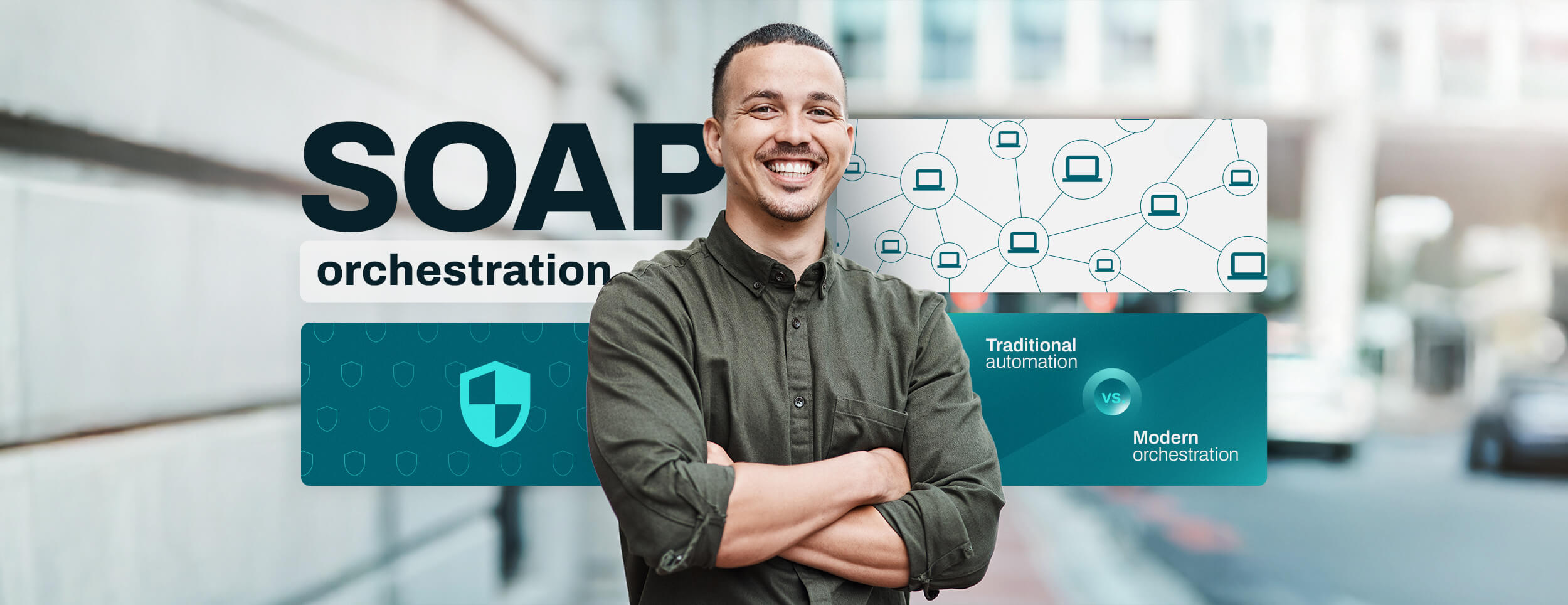The new rules of enterprise orchestration platforms

Every IT leader reaches the breaking point. Automation tools that once ran like clockwork start to wobble more than once in a while. There’s the typical story of a critical overnight job breaking and an alert showing up in your inbox 12 hours too late. Or that one employee who “knows how it all works” being out on leave, so no one can recover a failed process without them.
The problem isn’t a lack of automation. You have scripts, schedules and tools. The problem is a lack of orchestration. And that gap is putting your business outcomes at risk.
Modern Service Orchestration and Automation Platforms (SOAPs) exist to solve this. When you look at the leaders in the latest Gartner® Magic Quadrant™ for SOAP, you’ll find they aren’t just job schedulers with a prettier UI. They connect disparate systems. Understand business events. Anticipate outcomes and manage the mind-numbing complexity of a hybrid cloud world without increasing your team’s cognitive load.
Here are the new rules defining the modern orchestration platform.
Rule #1: Automation that listens
Time-based schedulers are still everywhere, but they’re tuned to a world that doesn’t exist anymore. Business runs on events now, not clocks.
A supply chain workflow, for example, doesn’t need to run at 2 AM. It needs to run after the fulfillment file hits your cloud bucket and the payment clears and the inventory check validates.
Modern orchestration listens instead of waiting for time to pass. In other words, it sequences jobs based on the triggers that matter. Those might be external events, upstream outcomes or system states.
Rule #2: Integration is deeper than connectivity
Every platform says it “integrates.” But in my experience, that often means little more than a basic API handshake. Real orchestration is understanding what connection means in the context of a process.
For example, did the SAP job finish successfully, or did it hit a soft failure? Is the returned dataset complete? Does the next system require a transformation before ingesting it?
Modern orchestration is built to manage this kind of nuance. It adapts to API changes, handles schema validation, triggers follow-ups, reroutes based on conditions and preserves dependencies across platforms.
Rule #3: Failure is a scenario instead of an anomaly
Legacy tools treat failure like an edge case. If a job fails, they send a generic alert and might retry once or twice. But in distributed cloud architecture, failure is expected. It’s just a matter of how you recover.
Modern orchestration platforms treat failure paths with full auditability — and no panic. They track SLAs, anticipate delays, escalate intelligently and reroute automatically. It’s not mere incident avoidance.
Rule #4: Orchestration is no longer a solo role
You don’t build processes in a vacuum. DevOps is managing CI/CD, IT Ops is overseeing runtime, Finance is owning the close — everyone needs orchestration. But that doesn’t mean everyone should write scripts.
Modern SOAP platforms make orchestration collaborative. Devs work in YAML or code. IT manages by exception. Business users trigger workflows safely via self-service portals. Meanwhile, centralized controls keep everything governed.
Rule #5: Observability must trace outcomes, not just steps
Most platforms can tell you a job ran, and some can tell you it failed. Very few can tell you why, though. Not to mention which business outcome was affected and who needs to fix it.
Modern orchestration gives you end-to-end visibility, so you can trace a late report all the way back to the missing data file and see the ripple effect through every dependent system.
Legacy automation vs. modern orchestration
| Legacy (the scheduler) | Modern orchestration (the SOAP) | |
| Trigger | Time-based (e.g., cron or fixed schedules) | Event-driven (API call, file arrival, message queue) |
| Awareness | Process-aware: Did the script run? | Outcome-aware: Was the business SLA met? |
| Scope | Task-focused and siloed by system | End-to-end and business process-focused |
| Environment | Built for on-premises or a single cloud | Natively hybrid cloud and multi-cloud |
| Failure | Reactive (alerts after a failure) | Proactive (predictive alerts and self-healing) |
| Users | Built for IT operators and developers | Built for all personas (IT and business) |
| Interface | Script-heavy, code-only | Low-code/no-code |
| Visibility | Basic logging | Deep observability and root-cause analysis |
Rule #6: AI only works when automation does
Enterprises are rushing to embed AI into operations, but smart models are worthless without smart orchestration. A demand forecasting model can’t adjust inventory unless the right workflows gets triggered, and an LLM can’t summarize reports unless the right data lands in the right place. If your data pipelines are fragile or manual, your AI outputs will be dead on arrival.
Orchestration is that invisible engine behind AI-powered operations. It feeds the model, triggers the action, verifies the outcome. Without that layer, your AI is like a disconnected lab experiment.
Evaluation criteria have shifted
If you’ve read the 2025 Gartner Magic Quadrant™ for SOAP report, you’ll notice the bar has been raised. At Redwood Software, we believe the evolving contents of this report are a clear signal that the market has shifted. Hybrid control, event-driven design, persona flexibility, business outcome alignment … these are now table stakes.
If you’re evaluating your next orchestration solution, use the Magic Quadrant™ as a starting point. Download your complimentary copy of the report and ask whether your current platform — or the one you’re considering — is built for the world as it is today or the world as it was a decade ago.
About The Author

Charles Caldwell
Charles Caldwell is a product and customer success executive with over two decades of experience building and scaling global teams across product management, technical presales, support and services. He has led organizations that deliver mission-critical software, drive customer retention and support complex B2B sales cycles.
At Redwood Software, Charles leads product strategy for its enterprise workload automation and orchestration platform. Prior to Redwood, he was VP of Product Management at Logi Analytics, where he also founded and scaled the company’s Customer Success organization — transforming how support and enablement were delivered.
Charles holds an MBA with a concentration in Entrepreneurship and Decision Sciences from George Washington University and a Bachelor of Science in Maritime Transportation from Massachusetts Maritime Academy.